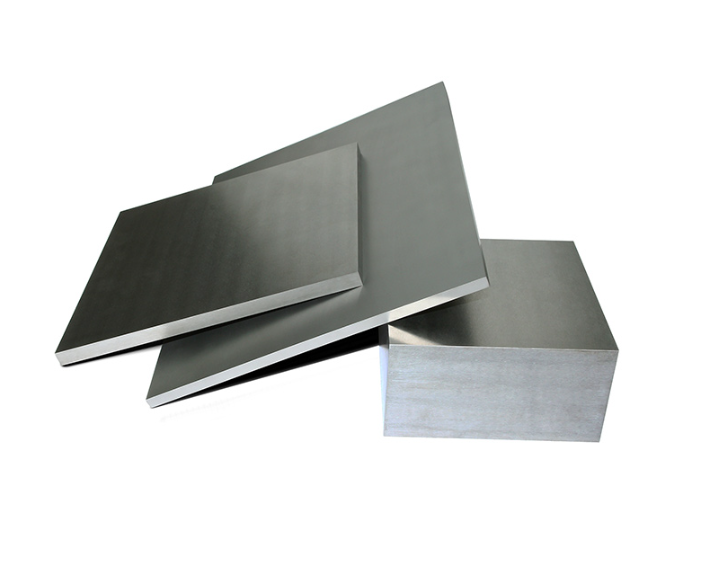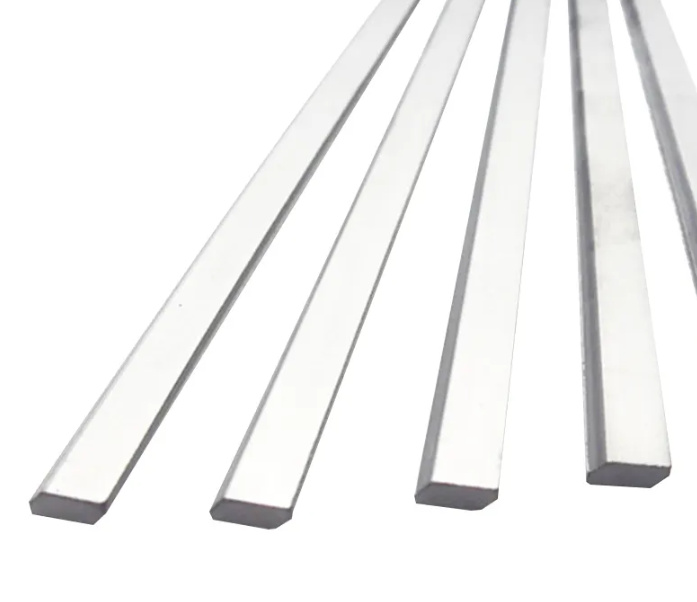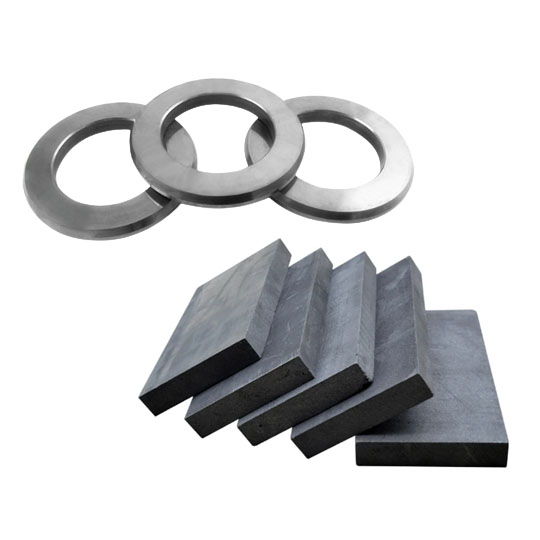高速切削工具の要件
電光石火の速さで金属を切り裂きながら、摩耗を早めることのない切削工具とはどのようなものなのか、不思議に思ったことはないだろうか。結局のところ、鋭い刃先が必要なだけではありません。高速切削工具は、かなり厳しい基準を満たさなければなりません。
何よりもまず、これらのツールに必要なのは 卓越した硬度 高速加工に関係する力に耐えるためです。金属と金属が高速でぶつかると、熱が発生し、摩擦が生じ、摩耗が生じます。工具がそれに対応できなければ、ゲームオーバーです。
次に必要なのは 熱安定性.つまり、800℃を超える高温でも硬度を維持する必要があるのだ。工具が文字通り赤熱している間に鋼を切ろうとすることを想像してみてほしい!
追加 タフネス 欠けたり割れたりしにくい、 耐薬品性 (潤滑油やワークピース材料から)、および 精密加工性 工具を厳しい公差で製造できるようにするためだ。切削工具の材料がクリアしなければならない高いハードルがお分かりいただけただろう。
では、超硬合金はこの厳しいラインナップのどこに入るのだろうか?それを探ってみよう。
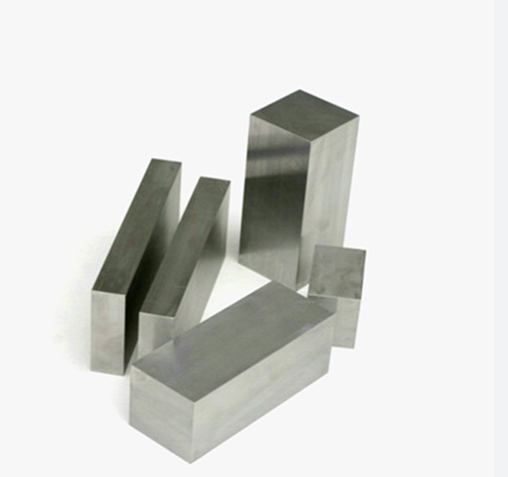
なぜ 超硬棒 高速切削工具に最適
ここで真のMVPについて話そう: 超硬棒.高速切削がオリンピック競技なら、超硬ロッドは毎回金メダリストだろう。しかし、なぜ超硬ロッドがそのようなトップ選手なのでしょうか?
超硬ロッドの核心は(文字どおり)、次のものから作られている。 炭化タングステン (WC)パウダーをコバルトのような金属バインダーと組み合わせた。この組み合わせにより、硬度と靭性が見事にミックスされる。ウルヴァリンの爪のようなもので、ほとんど壊れず、信じられないほど鋭く、戦いに備えている。
超硬棒 を提供する:
- 優れた硬度と耐摩耗性:ステンレス鋼、チタン、高ニッケル合金などの硬質金属の切断に最適。
- 熱安定性:1000℃の高温でもエッジを失わない。
- 寸法精度:精密な焼結と研削工程により、製造されるすべての工具に一貫性があります。
- 耐衝撃性:セラミックほど脆くはないが、ハイスよりはるかに長持ちする硬さ。
そして、これがキッカケだ:高級ロッドで作られた超硬工具は、多くの場合、長持ちします。 3~10倍長い 伝統的な材料で作られた道具よりも。
他の材料との比較:超硬とハイス、セラミック、サーメットの比較
では、超硬ロッドを競合相手と戦わせてみよう。科学のためにね。
| 素材 | 硬度(HV) | 熱抵抗 | タフネス | 工具寿命 | コスト | 一般的な使用 |
|---|---|---|---|---|---|---|
| 超硬棒 | 1600-2000 | 1000℃まで | ミディアム | 高い | $$$ | フライス加工、旋盤加工、ドリル加工 |
| こうそくシリアルインターフェース | 600-900 | 600℃まで | 高い | ミディアム | $ | 一般機械加工、ホビーユース |
| セラミックス | 2000+ | 1200℃まで | 低い | 非常に高い | $$$$ | 鋳鉄の高速仕上げ |
| サーメット | 1400-1600 | 800℃まで | ミディアム | ミディアム-ハイ | $$ | 仕上げ作業 |
そう、超硬はそのスイートスポットに当たる: 十分に硬く、長持ちし、熱にも安定している。.業界標準になったのも当然だ。
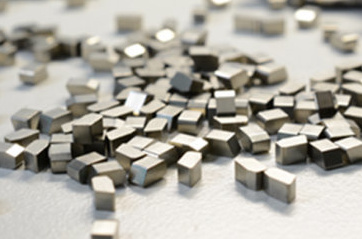
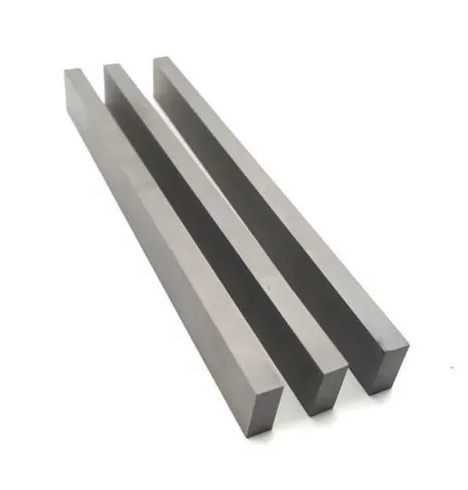
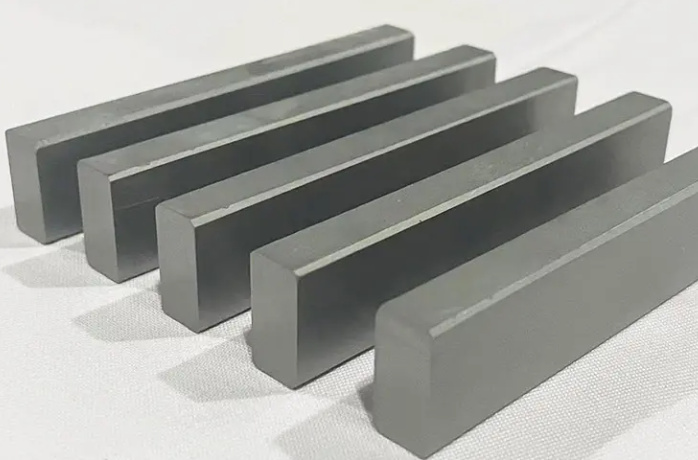
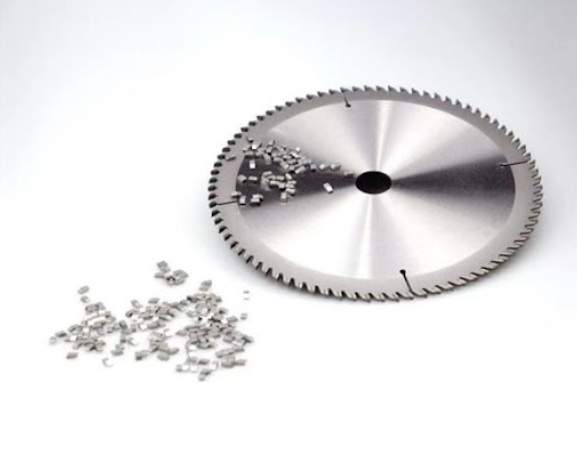
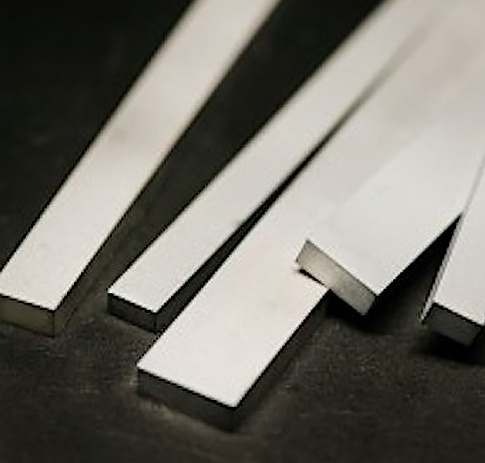

産業用工具における超硬ロッドの一般的な用途
超硬ロッドの魅力は、その汎用性の高さです。ここでは、超硬ロッドがどのような場面で威力を発揮するのか、簡単にご紹介します:
| 申し込み | 製作ツール例 | 使用上の利点 |
|---|---|---|
| CNC加工 | エンドミル、ドリル、リーマ | 長寿命、高精度 |
| 航空宇宙製造 | フライスカッター、ボーリングバー | 熱に耐え、強靭な合金を切断 |
| 自動車産業 | 成形工具、パンチ | 高速度鋼切断、繰り返し精度 |
| 金型製作 | マイクロツール、彫刻ビット | 精密なディテール、表面仕上げ |
| 木工・複合材料 | ルータービット、鋸刃 | エッジの保持、より滑らかな仕上げ |
超硬ロッドは、切削工具界のスイスアーミーナイフのようなもので、あらゆる作業に対応する工具が揃っている。
特定の金属粉末モデル 超硬棒
超硬合金といえば、その正体は粉末のことである。粉末は、プレスされ、焼結してロッドになる小さな粒である。そして、すべての粉末が同じように作られているわけではありません。以下はその例です。 10以上の特定モデル 産業界で使用されている:
| パウダーモデル | 構成と特徴 |
|---|---|
| WC-コ(K20) | 10%コバルト入り微粒超硬合金、高硬度の汎用タイプ。 |
| WC-Co(K30型) | 12%コバルトの中粒で、断続切削の靭性が向上。 |
| WC-コ(K10) | 超微粒子、6%コバルト、非常に硬く、仕上げに最適。 |
| WC-ニ | ニッケル結合カーバイド; 耐食性用途に使用 |
| WC-TiC-Co | 耐熱性と耐摩耗性を高める炭化チタンの添加 |
| WC-TaC-Co | 炭化タンタル添加で赤の硬度を向上 |
| WC-コバルト-クロム | 高い耐酸化性のためのクロム改質 |
| サブミクロンWC-Co | 超微粒子(<0.5 µm):マイクロツールや精密用途に最適 |
| ウルトラファインWC-Co | 0.2µm砥粒:超シャープエッジと高い表面仕上げが可能 |
| WC-Co-Vc | 炭化バナジウムをドープし、高速での耐摩耗性を向上 |
| WC-Co-ZrC | ジルコニウムカーバイドドープ;耐食性と耐熱衝撃性を向上 |
これらのパウダータイプはそれぞれ、超硬ロッドを特定の作業に合わせて調整します。マラソンをするのに登山靴は履かないでしょう?それと同じ理屈だ。
品質選びのヒント 超硬棒
超硬ロッドが本物であることはわかった。でも、ジャンク品から良いものを選ぶにはどうしたらいいのでしょう?インサイダーのヒントをいくつか紹介しよう:
- 粒度のチェック:粒子が細かい=工具が鋭利になり、耐摩耗性が向上する。サブミクロンやウルトラファインパウダーはこの点で優れています。
- バインダーの内容が重要:コバルトが多いほど靭性は高まるが、硬度は低下する。用途に合わせましょう。
- 評判のブランドを探す:サンドビック、ケナメタル、住友のような名前は、厳格なQCプロセスを持っています。
- 焼結データを求める:密度と気孔率の指標は、ロッドの品質について多くのことを教えてくれます。
- 可能であればテスト・サンプル:フィールドテストはスペックシートよりも常に優れている。
- ISOグレードのチェック:ISO K、M、Pのような等級は、棒が鋼、ステンレス、または鋳鉄に適しているかどうかを簡単に知ることができます。
高品質のロッドに投資すれば、初期費用は高くつくかもしれないが、工具交換の回数が減り、ダウンタイムが減り、より良い部品ができる。

よくあるご質問
| 質問 | 回答 |
|---|---|
| なぜ高速加工にはハイスより超硬ロッドが良いのか? | 超硬合金は高温でも硬く、切削速度が速く、長持ちする。 |
| 超硬ロッドは再研磨できますか? | そう、ダイヤモンド研削だ。しかし、それは厄介で、精密な装置を必要とします。 |
| 超硬棒はどれも同じですか? | いいえ。粒度、バインダーの含有量、添加剤は多種多様です。仕事の必要性に応じて選んでください。 |
| どのISOグレードを使うべきか、どうすれば分かりますか? | ISO P = スチール、M = ステンレス、K = 鋳鉄。最高の性能を発揮するために、材質をグレードに合わせます。 |
| 超微粒子とサブミクロンの炭化物の違いは? | ウルトラファインは、サブミクロンよりもさらに小さな粒径で、よりシャープなエッジと優れた表面仕上げを可能にする。 |
| 超硬ロッドはCNC用途に適していますか? | もちろんです。精度、剛性、工具の寿命が高く、CNC環境に最適です。 |
| 超硬工具には環境に対する懸念はありますか? | 使用済みの工具はリサイクルでき、多くのメーカーがコバルトとタングステンを再生して再利用している。 |
| DIYや趣味のプロジェクトに超硬ロッドを使用できますか? | できるけど、適切な取り扱いと研ぎ具が必要だ。プロショップ向きだね。 |
| 超硬棒はどのように作られるのですか? | 粉末冶金:粉末を混合し、プレスして形状を作り、高温で焼結する。 |
| どのブランドが最高の超硬ロッドを製造していますか? | サンドビック、セラチジット、ケナメタル、三菱マテリアル、住友がリードしている。 |

